Ready to ditch the middleman and trade crypto directly? Decentralized Exchanges (DEXs) are rapidly changing the game, offering secure and permissionless trading.
In our in-depth exploration of the Top 10 DEXs for 2024, we compared features, liquidity, and user experience to help you find the perfect platform for your decentralized trading journey.
What are Decentralized Exchanges and How do Decentralized Exchanges Work?
Decentralized Exchanges (DEXs) are shaking up the cryptocurrency world by offering a whole new way to trade. Unlike traditional, centralized exchanges (CEXs) where you deposit your crypto into the exchange's wallet, DEXs facilitate peer-to-peer (P2P) trading directly between users.
This eliminates the need for a trusted third party to hold your funds, a core tenet of the cryptocurrency philosophy.
DEXs leverage the power of blockchain technologyand smart contracts. Smart contracts are essentially self-executing agreements written in code that reside on the blockchain.
In the case of DEXs, these smart contracts automate the trading process. They act as a matchmaking service, connecting buyers and sellers who want to exchange cryptocurrencies.
There are a few key advantages to using DEXs. Firstly, they offer increased control and security for your crypto. Since you never relinquish custody of your funds, the risk of exchange hacks or mismanagement is significantly reduced.
Additionally, DEXs promote transparency by recording all transactions directly on the blockchain, which is a public ledger. This allows anyone to verify the legitimacy of trades.
However, DEXs also come with some drawbacks. Because they rely on smart contracts for automation, trading can be slower and less efficient compared to CEXs. Liquidity, or the ease with which you can buy or sell an asset, can also be a challenge on some DEXs, particularly for less popular cryptocurrencies.
Finally, the user interface for DEXs can be more complex for beginners compared to the streamlined experience offered by many CEXs.
Features of Decentralized Exchanges
Unlike CEXs, where users deposit their funds with a third-party exchange, DEXs facilitate peer-to-peer (P2P) trading directly between users. This shift unlocks a range of features that resonate with crypto enthusiasts seeking greater control and transparency:
1. Self-Custody:
One of the most appealing aspects of DEXs is the ability to retain custody of your crypto assets throughout the trading process. This eliminates the risk associated with centralized exchanges, where hacks or mismanagement could lead to a loss of funds. With DEXs, your crypto remains secure in your own wallet, giving you complete control.
2. Permissionless Trading:
DEXs operate on the principle of open access. Unlike CEXs, which may have geographical restrictions or require extensive verification procedures, DEXs allow anyone with a compatible wallet to participate in trading. This fosters a more inclusive financial landscape for users worldwide.
3. Automated Market Making (AMM):
DEXs leverage smart contracts, self-executing code stored on the blockchain, to automate the trading process. These smart contracts act as Automated Market Makers (AMMs), facilitating trades by utilizing liquidity pools. Users contribute their cryptocurrency holdings to these pools, earning rewards in exchange for providing liquidity to the market.
4. Transparency and Immutability:
All transactions on a DEX are recorded directly on the blockchain, a public and immutable ledger. This ensures complete transparency and auditability, allowing anyone to verify the legitimacy of trades. This level of transparency fosters trust and security within the decentralized finance (DeFi) ecosystem.
5. Security and Censorship Resistance:
Since DEXs are not governed by a central authority, they are inherently resistant to censorship. This means users cannot be blocked from trading specific assets or from accessing the platform itself. Additionally, the distributed nature of blockchain technology makes DEXs highly resistant to cyberattacks, as there's no single point of failure for hackers to target.
6. Diverse Features:
The top 10 DEXs for 2024 offer a wide range of features beyond basic trading. Some platforms allow for staking, where users can earn rewards by locking up their crypto holdings. Others offer features like margin trading, which enables users to leverage their positions for potentially amplified returns (and risks).
Read: Crypto Market Trend 2024
Best Decentralized Exchanges in 2024
Unlike traditional exchanges, DEXs empower users to retain custody of their crypto assets throughout trading, fostering greater control and security.
However, with a growing number of DEXs vying for attention, choosing the right platform can take time and effort.
This guide explored the top 10 DEXs for 2024, offering in-depth reviews, insightful comparisons, and actionable advice to help you navigate the decentralized trading landscape.
1. Uniswap (UNI): The Pioneer of AMMs
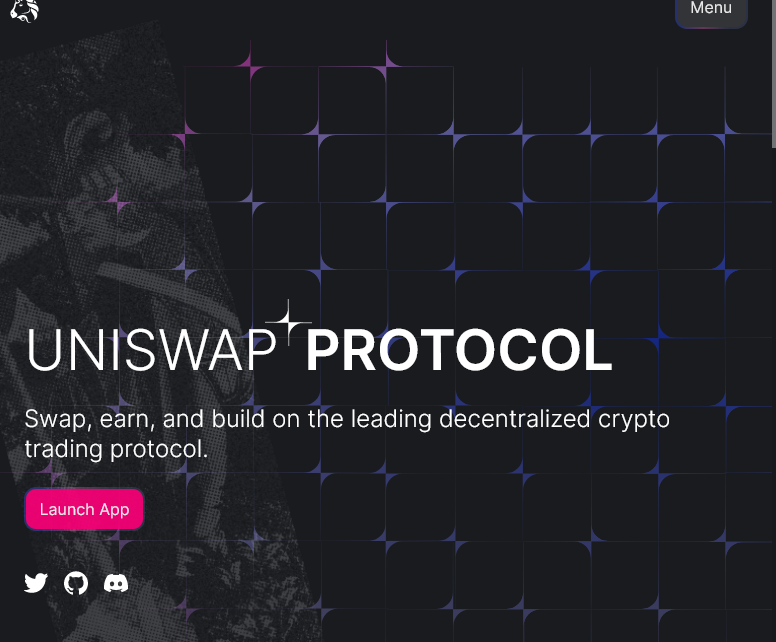
Uniswap, launched in 2018, is arguably the most well-known DEX. It pioneered the Automated Market Maker (AMM) model, where liquidity pools fueled by user contributions facilitate trades. Uniswap boasts many tradable tokens, particularly within the Ethereum (ETH) ecosystem.
Pros:
- Deep Liquidity: Uniswap enjoys some of the highest liquidity pools in the DeFi space, ensuring smooth trading experiences for popular tokens.
- Simple User Interface: Uniswap offers a user-friendly interface, making it a good choice for beginners.
- Wide Token Selection: Uniswap boasts a vast selection of ERC-20 tokens, catering to diverse trading needs.
- Governance Token (UNI): UNI token holders can participate in platform governance decisions.
Cons:
- High Gas Fees: Trading on Uniswap can incur high gas fees, especially during periods of network congestion.
- Limited Functionality: Uniswap primarily focuses on token swaps, with limited features compared to some competitors.
2. dYdX (DYDX): The Derivatives Powerhouse
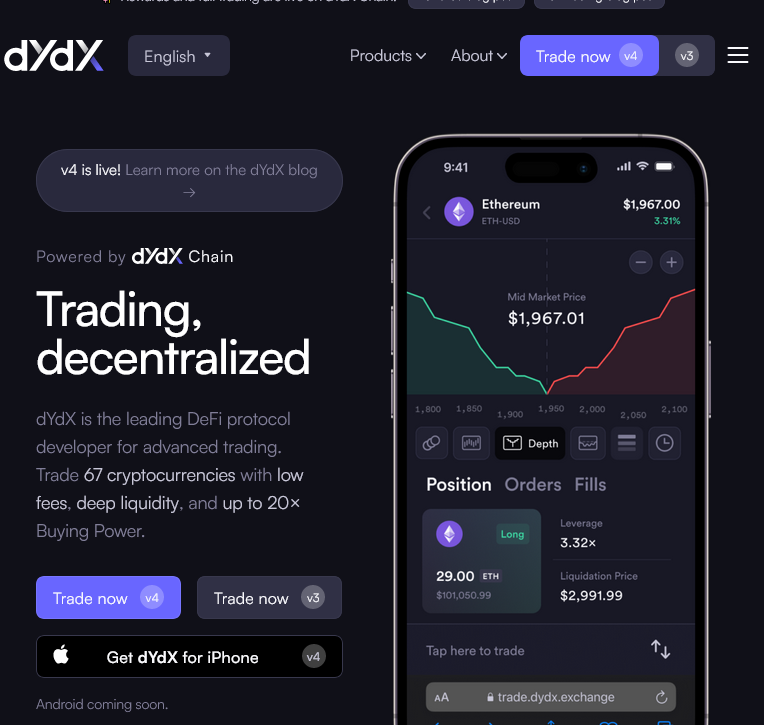
dYdX is a leading decentralized exchange for margin trading and perpetual contracts.
Unlike AMM-based DEXs, dYdX utilizes a central limit order book (CLOB) model, offering a familiar trading experience for users accustomed to traditional exchanges.
Pros:
- Advanced Features: dYdX caters to experienced traders with features like margin trading, perpetual contracts, and leverage.
- Scalability and Speed: Built on a custom layer-2 solution, dYdX boasts faster transaction speeds and lower fees compared to Ethereum-based DEXs.
- Growing Ecosystem: dYdX is actively expanding its feature set and user base, attracting a loyal community of derivatives traders.
Cons:
- Steeper Learning Curve: The CLOB model and advanced features might be intimidating for newcomers.
- Limited Token Selection: dYdX primarily focuses on major cryptocurrencies, with a smaller selection compared to some AMM-based DEXs.
3. PancakeSwap (CAKE): The Binance Smart Chain Champion
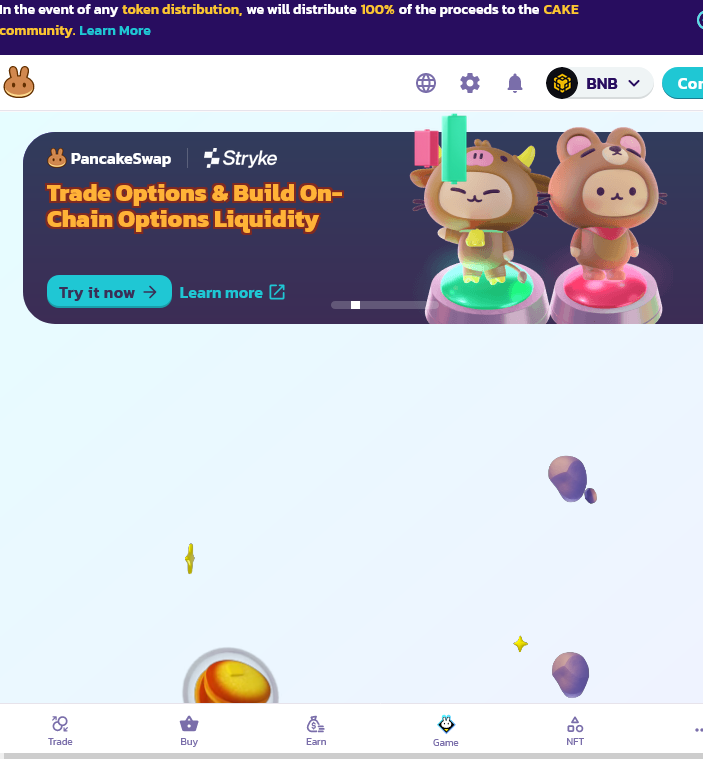
PancakeSwap is the leading DEX on the Binance Smart Chain (BSC). It offers a similar AMM model to Uniswap, focusing on faster transaction speeds and lower fees compared to the Ethereum network.
PancakeSwap also boasts a vibrant community and a gamified user experience.
Pros:
- Low Fees and Fast Transactions: Built on BSC, PancakeSwap offers a cost-effective trading experience for users.
- Engaging User Interface: PancakeSwap features a gamified interface with features like yield farming and lottery games, appealing to a broader audience.
- Strong Community: PancakeSwap fosters a strong community with active participation and ongoing development.
Cons:
- Limited Decentralization: BSC, while faster, is considered less decentralized than Ethereum.
- Smaller Token Selection: Compared to Uniswap, PancakeSwap offers a smaller range of tradable tokens, particularly for emerging projects.
4. 1inch (1INCH): The DEX Aggregator Powerhouse
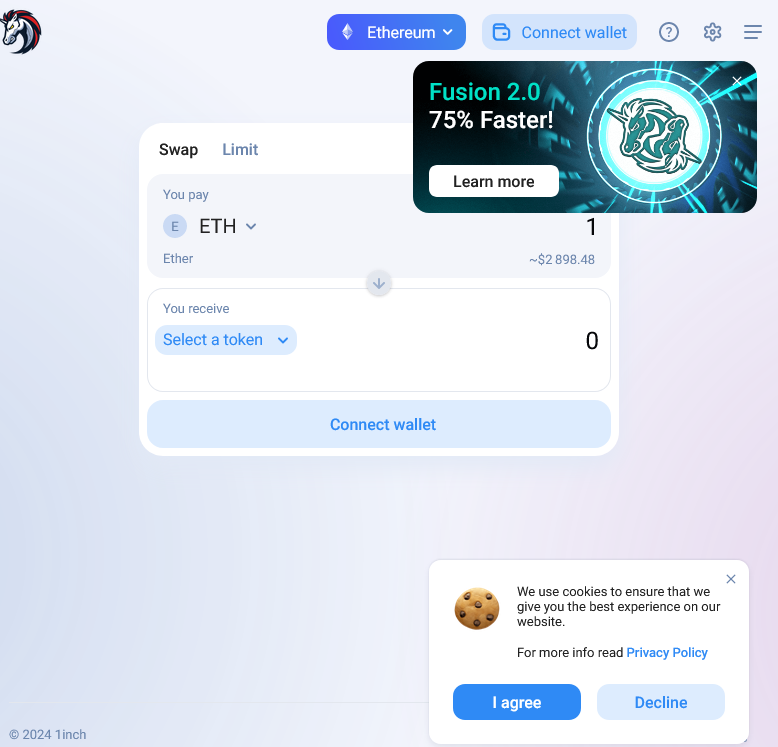
1 inch isn't a DEX itself but rather a DEX aggregator. It acts as a middleman, scouring multiple DEXs to find users the best possible rates for their trades.
This eliminates the need for users to search for the best liquidity pools across different platforms manually.
Pros:
- Optimizes Trade Efficiency: 1inch automatically searches for the best DEXs to execute trades, ensuring users get the most favorable rates.
- Wide DEX Coverage: 1inch integrates with many DEXs, providing users with access to a vast liquidity pool.
- Multiple Blockchains: 1inch supports trades across multiple blockchains, expanding user options.
Cons:
- Limited Control: Users cede some control over the trade execution process to 1inch.
- Potential for Technical Complexity: Understanding the underlying mechanics of DEX aggregation may require some technical knowledge.
5. SushiSwap (SUSHI): The Innovative Challenger
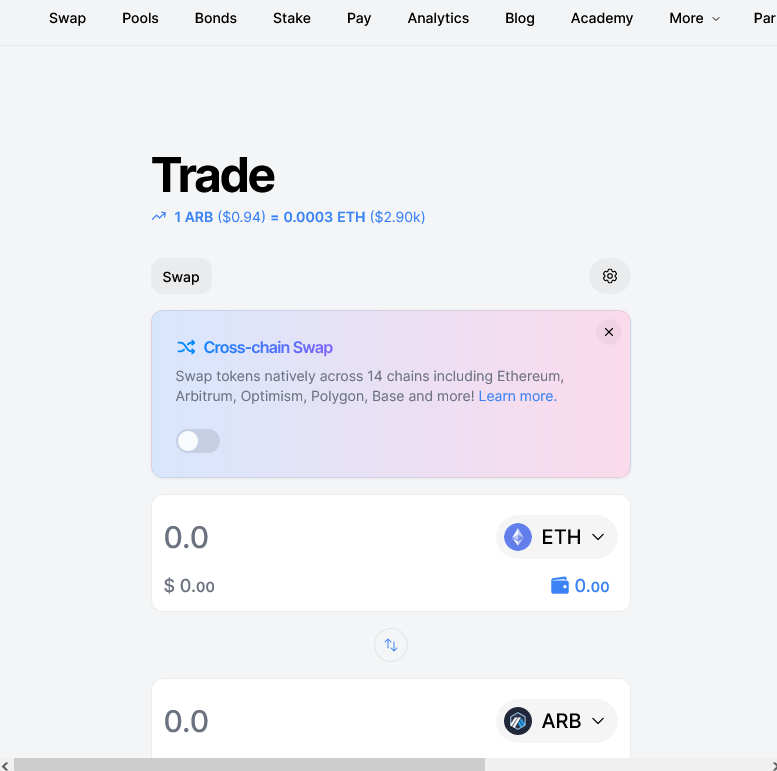
SushiSwap emerged as a fork of Uniswap, aiming to offer a similar AMM model with additional features. It boasts its governance token (SUSHI) and incentivizes liquidity providers with higher rewards compared to Uniswap.
Pros:
- Enhanced Rewards: SushiSwap offers attractive rewards for liquidity providers through its SUSHI token.
- Diverse Features: SushiSwap is expanding its feature set beyond basic swaps, venturing into areas like lending and borrowing.
- Strong Community: SushiSwap enjoys a passionate community, driving its development and adoption.
Cons:
Liquidity Concerns: While improving, SushiSwap's liquidity pools might be shallower for certain tokens compared to Uniswap.
Cloned Interface: The user interface closely resembles Uniswap, offering minimal differentiation for experienced users.
6. Curve Finance (CRV): The Stablecoin Oasis
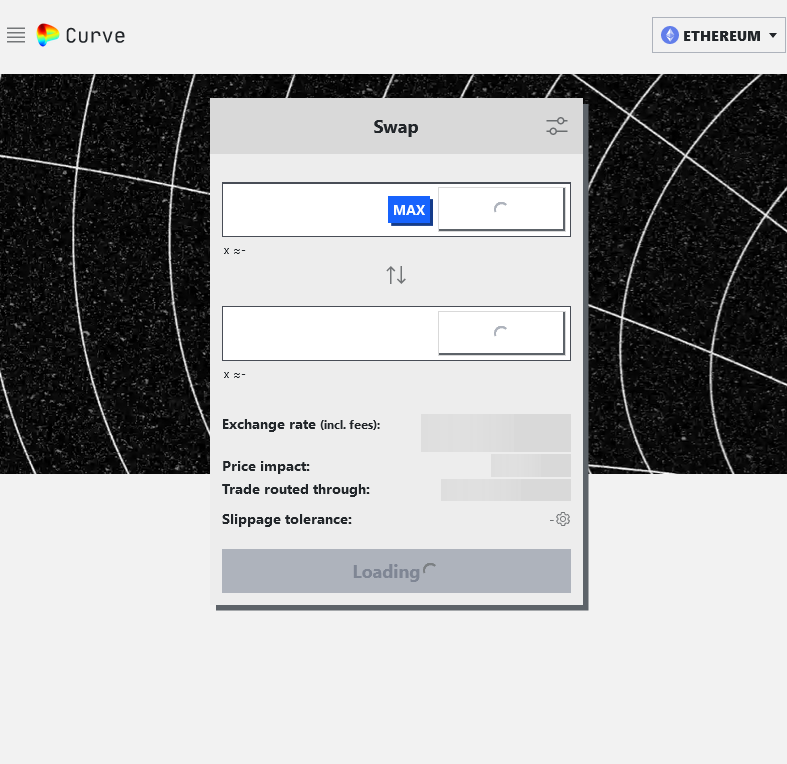
Curve Finance caters specifically to stablecoin trading. Its AMM pools are meticulously designed to optimize stablecoin swaps with minimal slippage, making it ideal for users exchanging pegged assets like USDT, USDC, and DAI.
Pros:
- Low Slippage for Stablecoins: Curve Finance facilitates stablecoin swaps with minimal price impact.
- High Liquidity: Deep liquidity pools ensure smooth and efficient trades for major stablecoins.
- Yield Generation Opportunities: Users can earn CRV tokens by providing liquidity to Curve's stablecoin pools.
Cons:
- Limited Token Support: Curve primarily focuses on stablecoins, offering a narrower range of tradable assets compared to other DEXs.
- Complex Design: Curve's AMM design might be more intricate for beginners to grasp.
https://curve.fi/#/ethereum/swap
7. Balancer (BAL): The Customizable AMM
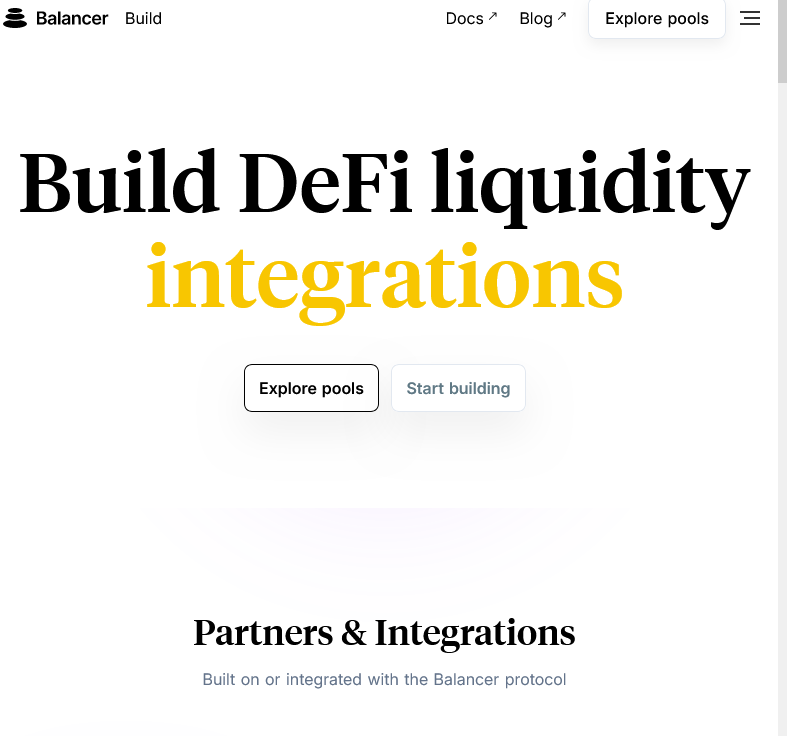
Balancer distinguishes itself with a unique AMM model that allows users to create custom liquidity pools with varying weights for different tokens. This caters to projects and users seeking more control over their liquidity provision strategies.
Pros:
- Flexible Liquidity Management: Balancer allows users to create customized liquidity pools with specific token weightings.
- Advanced Features: Balancer offers features like veBAL, a voting token for governance proposals that appeal to power users.
- Growing Ecosystem: Balancer is actively developing new features and functionalities, attracting a dedicated user base.
Cons:
- Steeper Learning Curve: The customizable pool creation process can be challenging for beginners.
- Lower Liquidity for Custom Pools: Liquidity for custom pools can be lower compared to standard AMM pools on other DEXs.
8. Kyber Network (KNC): The Liquidity Hub
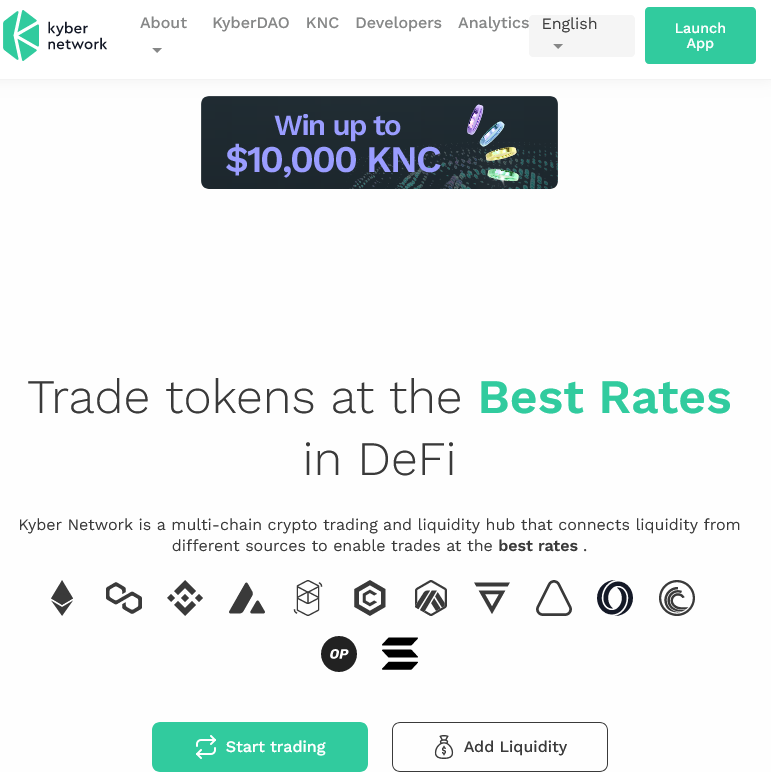
Kyber Network functions as a decentralized liquidity network that integrates with various wallets and applications. It aggregates liquidity from multiple sources, including DEXs and reserves, to give users access to a vast pool of tradable assets.
Pros:
- Aggregated Liquidity: Kyber Network integrates with various liquidity sources to offer access to a wide range of tokens.
- Wallet and Application Integration: Kyber Network is seamlessly integrated with numerous wallets and DeFi applications, enhancing user experience.
- Focus on Developer Adoption: Kyber Network prioritizes developer adoption, making it a popular choice for building DeFi products.
Cons:
- Limited User Interface: Kyber Network primarily acts as a liquidity infrastructure, offering a less user-friendly interface for direct trading compared to standalone DEXs.
- Potential for Reliance on Centralized Oracles: Certain aspects of Kyber Network may rely on centralized oracles for price data, raising decentralization concerns for some users.
9. Osmosis (OSMO): The Interchain Bridge Builder
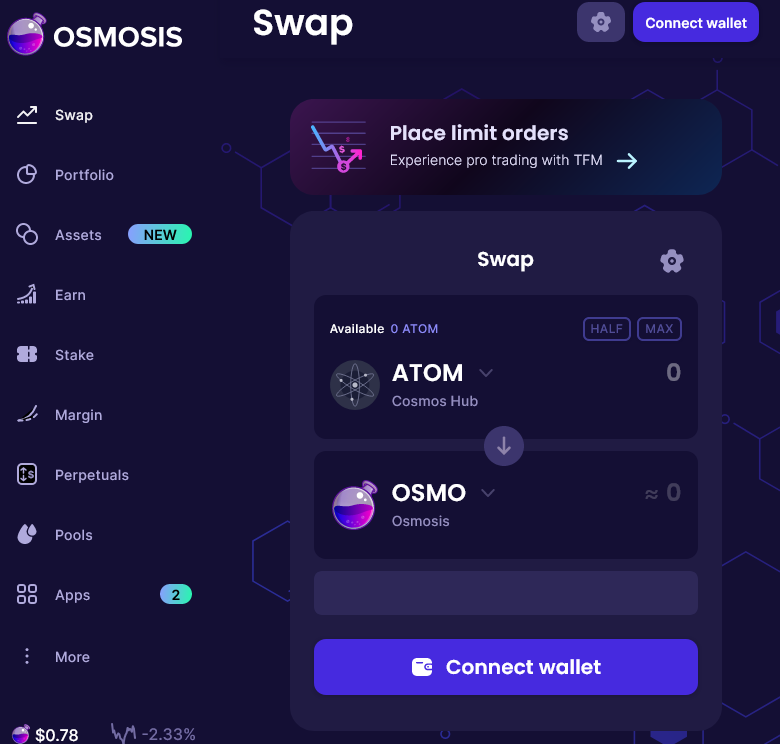
Osmosis stands out as a prominent DEX within the Cosmos ecosystem. It leverages the Inter-Blockchain Communication (IBC) protocol, facilitating seamless token swaps between various blockchains connected to Cosmos. This opens doors for users seeking to trade assets across diverse blockchain networks.
Pros:
- Interchain Swaps: Osmosis empowers users to trade tokens across different blockchains within the Cosmos network, fostering a more interconnected DeFi landscape.
- Strong Community Focus: Osmosis prioritizes community governance and incentivizes active participation through its OSMO token.
- Scalability and Speed: Built on the Cosmos SDK, Osmosis boasts faster transaction speeds and lower fees compared to some Ethereum-based DEXs.
Cons:
- Limited Token Selection: Currently, Osmosis primarily focuses on tokens within the Cosmos ecosystem, with a smaller range of tokens compared to some broader DEXs.
- Newer Platform: As a relatively new DEX, Osmosis is still establishing its track record and user base compared to more established platforms.
10. Uniswap v3 (UNI): The Evolving AMM
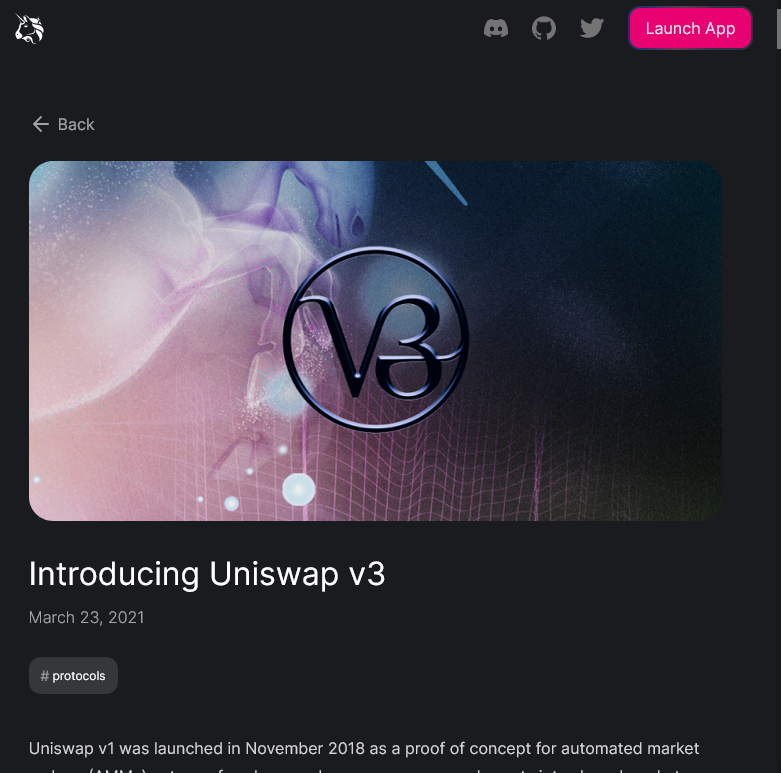
While not a completely separate platform, Uniswap v3 represents a significant upgrade to the original Uniswap protocol. It introduces concentrated liquidity pools, allowing users to deposit their assets into specific price ranges and potentially earn higher fees.
Pros:
- Enhanced Liquidity Efficiency: Concentrated liquidity pools on Uniswap v3 can potentially improve capital efficiency for liquidity providers.
- Flexibility for Users: Users have more control over their liquidity provision strategies with concentrated pools.
- Integration with Existing Uniswap Ecosystem: Uniswap v3 seamlessly integrates with the existing Uniswap ecosystem and existing UNI token utility.
Cons:
- Increased Complexity: The concentrated liquidity model of Uniswap v3 introduces additional complexities for users to navigate.
- Newer Iteration: Uniswap v3 is a recent upgrade that is still evolving, and its long-term implications for the overall Uniswap ecosystem are being observed.
Choosing the Right DEX for You: A User-Centric Approach
With a diverse landscape of DEXs offering unique features and functionalities, selecting the right platform depends on your individual needs and trading style.
Here are some key factors to consider:
- Trading Experience: Are you a beginner seeking a user-friendly interface, or an experienced trader needing advanced features?
- Supported Tokens: Which cryptocurrencies do you intend to trade? Ensure the DEX offers the tokens you need.
- Fees and Transaction Speeds: Evaluate the gas fees and transaction speeds associated with each DEX.
- Security and Decentralization: Prioritize DEXs with solid security practices and a high degree of decentralization.
By carefully considering these factors alongside the in-depth reviews provided for the top 10 DEXs in 2024, you can confidently make an informed decision and embark on your decentralized trading journey.
Remember, the DEX terrain is constantly evolving, so staying updated on emerging platforms and innovations is crucial for navigating this exciting frontier.
Conclusion
The DEX landscape is rapidly evolving, offering various platforms catering to various user needs. By understanding the strengths and weaknesses of the top 10 DEXs explored in this guide, you can select the platform that best aligns with your trading goals and priorities.
Remember, the future of DeFi is being built on these decentralized exchanges, and staying informed about their innovations is vital to navigating this exciting and ever-changing landscape.